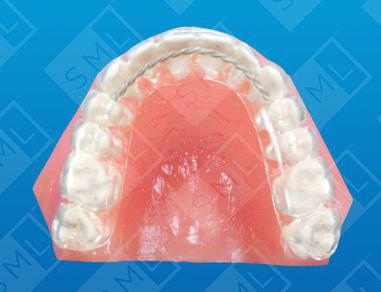The maxillary horseshoe splint is the most common splint made because of its comfort and ease of adjustability. Just like the full palatal splint, this design can distribute forces, decrease trauma, aid in healing, and control and protect against excess tooth mobility due to primary or secondary occlusal trauma. It is also the most common design used to provide post-orthodontic stabilization. The occlusal surface can be finished in whatever manner desired, i.e. smooth with point contact, positive facets for opposing dentition, cuspid rise, and/or anterior guidance to disarticulate the teeth in protrusive or excursive movements. Note - To avoid unnecessary chair time adjusting an extra-coronal splint, always provide the lab with an accurate set of working casts and a construction bite that precisely represents the vertical and horizontal occlusal relationship of the splint.



